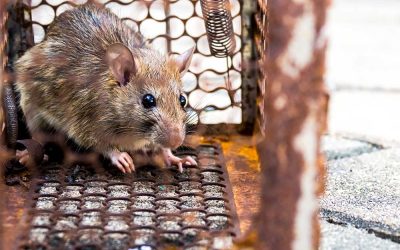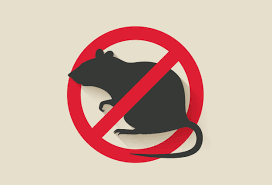Texas is home to many bugs and animals, with over 30,000 insects calling the lone star state home. That’s a lot of pests!
There are hundreds of moth species within Texas, but three types can wreak havoc in your home. The Indianmeal moth, the case-bearing clothes moth, and the webbing clothes moth are three Texas moths you’ll want to avoid.
From invading your pantry to destroying your belongings, these moths can cause major issues indoors. Check out our article to learn more about these pesky insects and how you can keep your home safe from moths.
Three Destructive Texas Moths
As one of the top states inhabited by dangerous animals and bugs, it’s no surprise that Texas has its fair share of destructive pests.
Moths are seemingly harmless creatures, typically spotted flitting around outdoor light fixtures during the evening hours. However, some types can cause real damage to your possessions if they sneak inside.
The Indianmeal Moth
Indianmeal moths are common pantry pests for Texas homeowners. Like the larder beetle or pantry weevils, Indianmeal moths target the goodies stored away in your cabinets.
These pests prefer to burrow through nuts, cereal, grains, cornmeal, or fruit kept inside your pantry. You may even find a few in your pet’s food when making a meal for your furry friend.
Unlike other food pests, like cockroaches or flies, Indianmeal moths cannot transmit dangerous diseases as they comb through your food. So, if you’ve accidentally consumed something infested with the moths, you’re not likely to fall ill.
However, keeping or reusing contaminated substances isn’t advised. Indianmeal moths prefer to lay eggs within your foodstuff, and an infestation can grow without proper pest control methods. To combat a difficult pest problem, you’ll need to remove the moths and food from your pantry.
Case-bearing Clothes Moth
When you have a case-bearing moth infestation, your clothing could suffer. As its name suggests, these Texas moths don a unique case-like appendage during their larval state. Also called the case-making moth, the moth larvae use nearby materials to create their covering.
Take a look at this video to see the case-bearing clothes moth in action.
Unlike other insect larvae, the case-bearing clothes moth will utilize its bag-like shroud to move over food sources to feed, according to Texas A&M’s Agrilife Extension. Despite their unique larval appearance, it’s often difficult to realize you have an infestation until you find damage.
Case-bearing clothes moths typically feed on the following:
- Carpeting
- Rugs
- Clothing
- Furniture
- Hair
- Brush bristles
Because adult moths don’t feed following their maturation, clothing moth larvae cause all of the damage in your home.
Webbing Clothes Moth
Also known as the common clothes moth, the webbing clothes moth is an ordinary household pest.
Both clothing moths typically eat the same materials, but webbing clothes moths will also sample the rice and grain items in your pantry.
Adult webbing clothes moths will lay eggs near viable food sources. Once they find the appropriate cloth materials, female moths deposit their eggs within the fabric’s fibers. The eggs will stick tight to your belongings as the moths secrete a glue-like substance to keep the eggs in place.
Once in your closet, these moths can damage your woolen and cloth clothing. While they prefer certain textiles, they can still pick apart the other items in your closet.
How Dangerous are These Moths?
These Texas moths aren’t dangerous in the traditional sense. They cannot spread diseases or cause you physical harm. Many adult moths lack mouths and cannot bite you if they draw near.
Moths also shy away from human contact. If an outdoor moth accidentally flies inside, it will frantically attempt to find an exit. Pantry and clothing moths also avoid contact, so you won’t be bothered by these pests while they’re indoors.
Unfortunately, this may make it harder to spot the real danger of Texas moths: their damaging larvae.
Indianmeal moths can breed within your pantry items, continually ruining your stored food. While they may not spread diseases, you should avoid consuming food ruined by bugs.
When you have an insect infestation in your food, you could lose hundreds of dollars in groceries. The supermarket isn’t cheap, and tossing your pantry items can make a dent in your wallet!
While Indianmeal moths can impact your food, clothing moths can cause physical damage to your possessions. From your old winter jacket stored at the back of your closet to last season’s fleece sheets, clothing moths can ruin the items you hold dear.
Because these Texas moths can quickly breed with short maturation periods, you could have a significant infestation before you notice the damage.
How Can I Get Rid of Moths?
The best way to eliminate these annoying pests is to prevent them from entering your home and remove them from their breeding areas.
Store Your Food and Clothing
Instead of leaving your food in their store coverings, try moving your cereal, rice, and other grains into plastic or glass containers. It may be bothersome to displace your newly purchased goods, but the containers will prevent moths from climbing into your food to lay eggs.
Similarly, store your clothing following seasonal use. Once the winter chill sets in, place your spring and summer clothing in plastic storage containers or vacuum-sealed bags to discourage moths from laying eggs on your clothing.
Throw Away Affected Items to Remove Texas Moths
An infestation will persist as the larvae mature and lay eggs as adults. Instead of trying to salvage your infested food or clothing, you should always trash anything heavily infected with moth eggs or larvae, even if it’s your newly purchased sweater or box of cereal.
Thoroughly Clean your Counters
Because pantry moths are attracted to the food in your home, crumbs and messes may attract the pests to visit.
Always clean up after cooking, whether you’re preparing a meal or just making a sandwich. These tiny moths will lay their eggs wherever food is bountiful, so they could take up shop along your counters if enough food is left behind.
If you have spilled food in your pantry, wipe it up and throw it in the trash. Any lingering messes could give pantry moths a clear path to the other foods in your pantry.
Regularly Launder your Clothing
While clothing moths feed on the woolen and cotton fabrics in your closet, dirty clothing may attract them more. Instead of packing away a shirt with a few stains, throw it in the wash before hanging it up.
If the clothes in your closet have food remnants, grease, or oils, clothing moth larvae will flock toward your precious possessions. Keeping your clothing clean and packed away from sight will keep these obnoxious pests from eating your items!
Contact a Pest Control Company
When your preventive methods aren’t working, it’s time to call the professionals. Mothballs and store-bought pesticides may work, but they can harm your clothing and food with toxic chemicals.
Here at NTX Best Pest, we can eliminate any Texas moths that crawl inside your home! Whether you’re battling pests in your kitchens or closet, we have specialized methods to remove them.
Give us a call today to learn more!



0 Comments